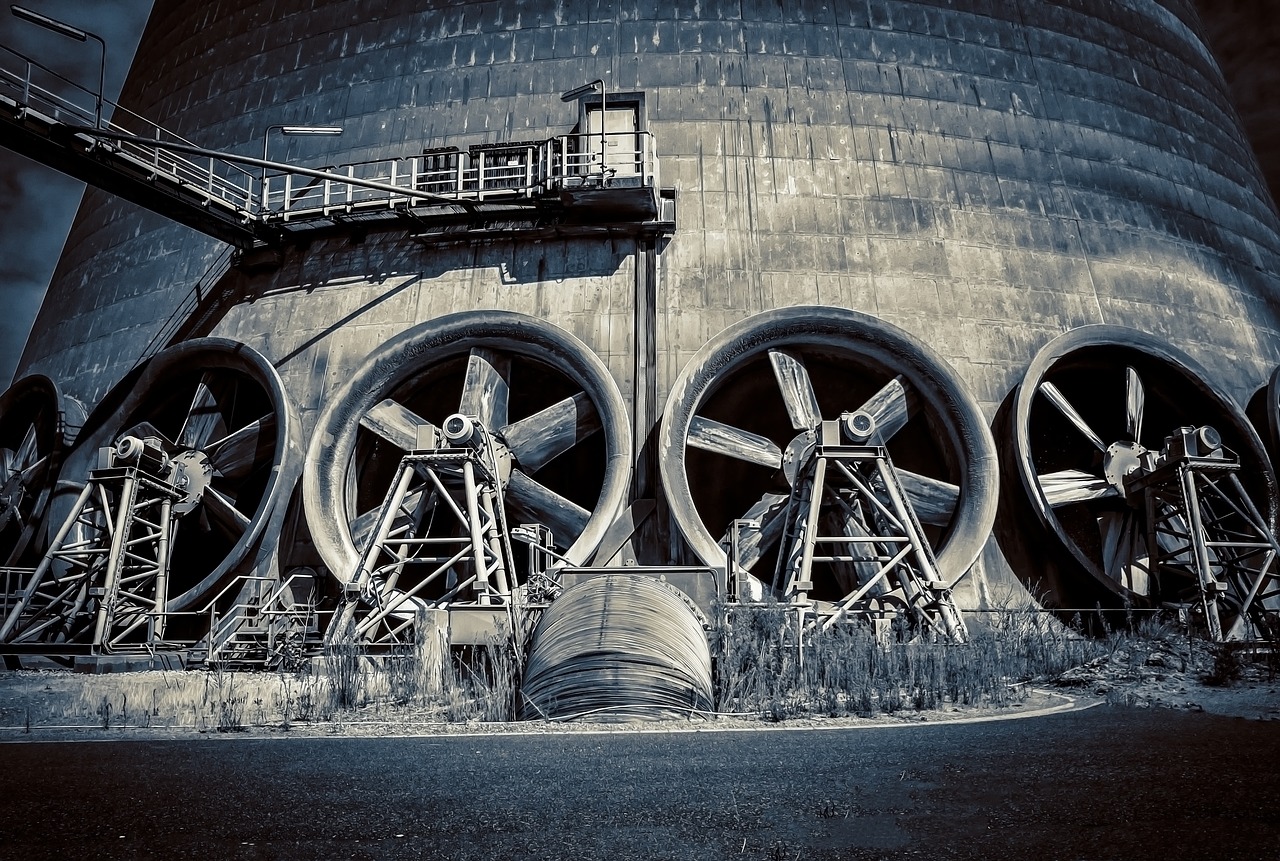Fan
In construction and engineering, the term "fan" typically refers to a device used to create airflow by the use of rotating blades or vanes. Fans are commonly used to move air or other gases, to provide ventilation, or cool systems and components. They can be found in HVAC systems, electronic devices, industrial machinery, and other engineering applications.
The earliest forms of fans were simple handheld devices made of natural materials such as leaves, feathers, or palm fronds. They were used by civilizations including the Egyptians, Greeks, and Romans, for personal cooling and ceremonial purposes.
In medieval times, fans became more elaborate and decorative. They were crafted from materials such as silk, lace and parchment and often featured intricate designs and paintings. These fans were primarily used by royalty and the upper classes as status symbols.
During the Renaissance period, fans became fashionable accessories in Europe. They were adorned with ornate handles and crafted with delicate materials such as ivory, mother-of-pearl and silk.
In the 18th century, mechanical fans started emerging, powered by hand-cranked mechanisms. The invention of steam power during the Industrial Revolution brought significant advances in fan technology. Steam-powered fans were used for industrial purposes, such as providing ventilation in mines and factories.
The advent of electricity in the late 19th century revolutionised fan design. Electric fans became popular in the early 20th century, offering more convenience and efficiency. Initially, these fans featured open-blade designs, but later they transitioned to safer enclosed designs.
Recently fans have undergone further technological advancements. They now come in various types, including ceiling fans, desk fans, tower fans, and axial fans used in HVAC systems. Modern fans feature improved blade designs, energy-efficient motors, remote controls, and smart connectivity options.
Articles about fans on Designing Buildings include:
- Air conditioning
- Air conditioning
- Air handling unit AHU
- Chilled water fan coil system vs refrigerant based system
- Constant air volume CAV
- Evaluation of cooling effects: outdoor watermist fan
- Fan coil refurbishment for improved operational efficiency
- Fan coil unit
- Fan coils
- Fan convector
- Fan heater
- How do I know what capacity fan coil I need?
- How does a chilled water fan coil unit work?
- HVAC
- Intermittent extract fan
- Types of fans.
- Variable air volume VAV
- Ventilation
- What are the different types of fan coil units?
Featured articles and news
One of the most impressive Victorian architects. Book review.
RTPI leader to become new CIOB Chief Executive Officer
Dr Victoria Hills MRTPI, FICE to take over after Caroline Gumble’s departure.
Social and affordable housing, a long term plan for delivery
The “Delivering a Decade of Renewal for Social and Affordable Housing” strategy sets out future path.
A change to adoptive architecture
Effects of global weather warming on architectural detailing, material choice and human interaction.
The proposed publicly owned and backed subsidiary of Homes England, to facilitate new homes.
How big is the problem and what can we do to mitigate the effects?
Overheating guidance and tools for building designers
A number of cool guides to help with the heat.
The UK's Modern Industrial Strategy: A 10 year plan
Previous consultation criticism, current key elements and general support with some persisting reservations.
Building Safety Regulator reforms
New roles, new staff and a new fast track service pave the way for a single construction regulator.
Architectural Technologist CPDs and Communications
CIAT CPD… and how you can do it!
Cooling centres and cool spaces
Managing extreme heat in cities by directing the public to places for heat stress relief and water sources.
Winter gardens: A brief history and warm variations
Extending the season with glass in different forms and terms.
Restoring Great Yarmouth's Winter Gardens
Transforming one of the least sustainable constructions imaginable.
Construction Skills Mission Board launch sector drive
Newly formed government and industry collaboration set strategy for recruiting an additional 100,000 construction workers a year.
New Architects Code comes into effect in September 2025
ARB Architects Code of Conduct and Practice available with ongoing consultation regarding guidance.
Welsh Skills Body (Medr) launches ambitious plan
The new skills body brings together funding and regulation of tertiary education and research for the devolved nation.
Paul Gandy FCIOB announced as next CIOB President
Former Tilbury Douglas CEO takes helm.























